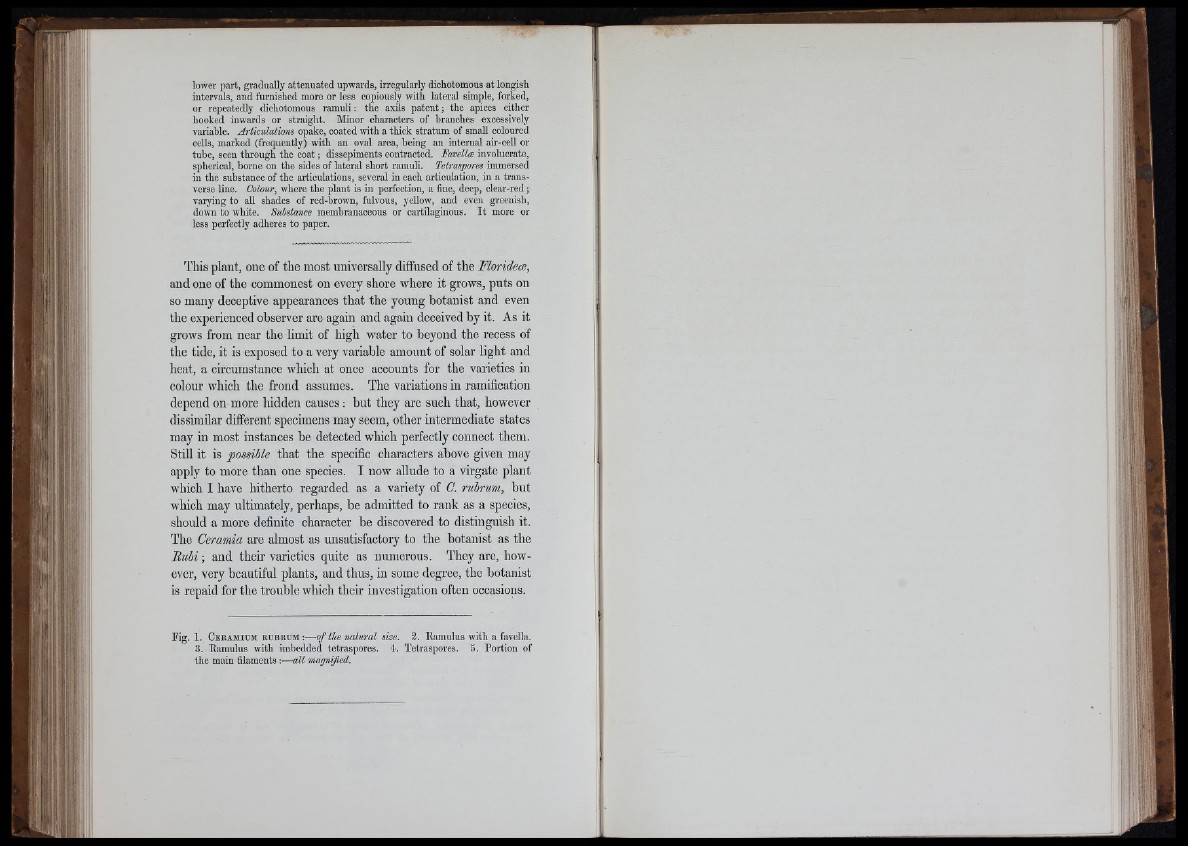
iM-:
lower part, gradually attenuated upwards, irregularly dichotomous at longisli
intervals, and furnished more or less copiously with lateral simple, forked,
or repeatedly dichotomous ramuli : the axils patent ; the apices either
hooked inwards or straight. iVtinor characters of branches excessively
variable. Articulations opake, coated with a thick stratum of small coloured
cells, marked (frequently) with an oval area, being an internal air-ceU or
tube, seen through the coat ; dissepiments contracted. Favellce involúcrate,
spherical, borne on the sides of lateral short ramuli. Tetraspores immersed
ill the substance of the articulations, several in each articulation, in a transverse
line. Colour, where the plant is in perfection, a fine, deep, clear-red ;
varying to all shades of red-brown, fulvous, yellow, and even greenish,
down to white. Substance membranaceous or cartilaginous. I t more or
less perfectly adheres to paper.
This plant, one of the most universally diffused of the Morideoe,
and one of the commonest on every shore where it grows, puts on
so many deceptive appearances that the young botanist and even
the experienced observer are again and again deceived by it. As it
grows from near the limit of high water to beyond the recess of
the tide, it is exposed to a very variable amount of solar light and
heat, a circumstance which at once accounts for the varieties in
colour which the frond assumes. The variations in ramification
depend on more hidden causes ; but they are such that, however
dissimilar different specimens may seem, other intermediate states
may in most instances be detected which perfectly connect them.
Still it is possible that the specific characters above given may
apply to more than one species. I now allude to a virgate plant
which I have hitherto regarded as a variety of C. rubrum, but
which may ultimately, perhaps, be admitted to rank as a species,
should a more definite character be discovered to distinguish it.
The Ceramia are almost as unsatisfactory to the botanist as the
Buhi ; and their varieties quite as numerous. They are, however,
very beautiful plants, and thus, in some degree, the botanist
is repaid for the trouble which their investigation often occasions.
Fig. 1. Ceramium rubrum :—of the natural size. 3. Hamulus with a favella.
3. Hamulus with imbedded tetraspores. 4. Tetraspores. 5. Portion of
the main filaments;—all magnified.
i ii '. >ily